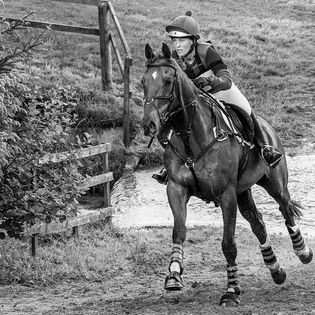To be fit enough to compete at the early competitions, your horse needs to be in full work. Full work is being ridden 5-6 days per week in a varied set of exercises and surfaces. This will build a basic level of fitness.
Once you have established basic fitness you can then concentrate on building both cardiovascular fitness muscle and topline.
Things to consider before you start:
- Age: – Older and very young will struggle to get fit. Those in their prime 8-14 years will get fitter over a shorter period.
- Previous fitness:- If your horse is used to having time off before being brought back into work, you’ll find it easier and quicker to get him fitter than a horse who’s getting fit for the first time.
- Previous injuries:- If your horse is coming back into work after time off with an injury, it will take more time for them to get fit to ensure pressure is not put on the original injury.
- Average length of time it takes to go from unfit to fit is a minimum of 12 weeks.
- Horses should start with 20 mins of walk either in hand or under saddle, and increase work load by 5 mins per week until they are up to a total of 45 mins.
- At this stage you should start introducing trot work start with 5 mins per session and increase up to a total of 20 mins trot work within the 45 mins.
Climb every mountain:
- Hill work is your friend. We are very blessed in this area to have access to lots of hills, both steep and gradual inclines.
- Taking horses up and down hills is more demanding than doing the same distance on the flat. Therefore you will build fitness more quickly while adding less miles to your horses overall clock.
- Provides crucial cardio.
- Encourages your horse to breathe deeply and use his whole body.
- Downhill work uses different muscles therefore improving balance and strength.
Where to start:
- Start with trotting up hills and walking down them building the trot time up as fitness increases.
- Encourage your horse to take up the contact while doing this. This will encourage them to carry themselves properly and engage the correct muscle groups.
- When fit enough can introduce canter work up hill.
- As your horse becomes fitter can introduce collected trot down hills as well to encourage development of balance and sure footedness.
- Transitions during hill work will increase strength and muscle tone.
Get more flexible:
Pole and grid work are a great way to build on flexibility and core muscle strength when basic fitness has been established.
- Distances for poles:
- Trot poles: 1.2–1.7m
- Canter poles: 2.7–3.4m
- Bounce striding: 3–3.7m
- One stride distance: 6.4–7.5m
- Two stride distance: 10–11m
- Start with poles on the ground varying distances and shapes of the poles. There are many clinics you can take to help with this. Also there is a lot of useful information online
- As fitness increases you can raise the poles and change distances which will encourage your horse to extend and collect. This gives their core a work out, whilst completing the course.
- This type of work can be done either under saddle or on the lunge.
Interval Training:
The aim of interval training is to keep the horses heart rate at 140 Beats pre minute. This is a comfortable heart rate for a horse to be worked at and reduces the lactic acid build up within the muscle groups.
Examples of interval training:
This should be done when the horse is fully warmed up.
- Three minutes in trot and one minute in walk. Repeat 3–5 times
- Two minutes in canter and one minute in walk. Repeat 2–4 times
- Two minutes in trot, one minute in walk. Then, cool your horse off
Build up on the time frames by adding a minute every 10-14 days to the interval training day.
Gallop work:
This is important to improve the overall fitness and stamina of your horse. Should be done in an open space (preferably gallops).
If your horse isn’t keen to take your forward and struggles with the work, then a rethink on your levels of fitness might be in order. A horse will take a minimum of 12 weeks of consistent regular work before gallop work should be considered.

